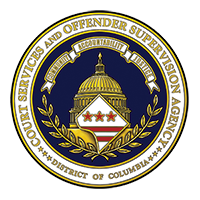WHO WE ARE | Our History
In January 1997, President William J. Clinton outlined a vision to revitalize Washington, DC, and improve prospects for successful “home rule.” The cornerstone of the strategy for accomplishing this goal was to relieve the District of Columbia Government of major financial and management responsibilities by having the federal government assume responsibility for functions typically funded by state governments (rather than municipalities), like prisons, courts, and probation and parole supervision. On August 5, 1997, the National Capital Revitalization and Self-Government Improvement Act of 1997 (“Revitalization Act”) became law.
Under the Revitalization Act, three separate entities of the District of Columbia government were combined into a single agency. The new agency, the Court Services and Offender Supervision Agency for the District of Columbia (CSOSA), assumed the adult probation function from the Superior Court for the District of Columbia and the parole supervision function from the District of Columbia Board of Parole (which was disbanded). These responsibilities, of supervising District of Columbia Code Offenders who were serving a portion of their sentences in the community, fell under the Court Social Services Agency. The Revitalization Act transferred the parole adjudication function to the United States Parole Commission. The Pretrial Services Agency for the District of Columbia (PSA), responsible for supervising pretrial defendants, became an independent entity within CSOSA with its own budget and organizational structure. Although PSA is an independent entity within CSOSA, the two agencies share some support functions and transmit their budgets to Congress together. For a time, the Public Defender Service also fell under the umbrella of the new agency.
After a three-year period of trusteeship, Attorney General Janet Reno certified CSOSA as an independent, federal Executive Branch agency on August 4, 2000.


